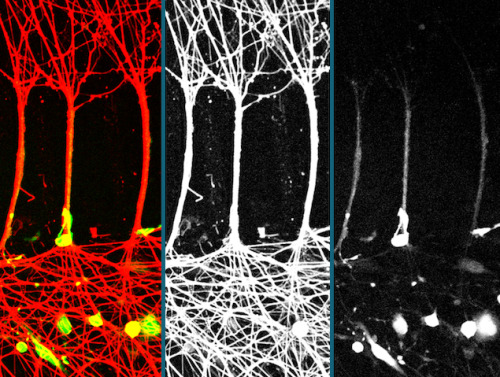
Tracking Troublesome Viruses
Herpes viruses are troublesome microbes, causing diseases ranging from cold sores (in the case of herpes simplex virus, HSV) to cancer (Epstein-Barr virus, EBV) while being little more than a strand of DNA packaged inside a protein coat. Viruses can’t replicate themselves, so they need to hijack their host cell’s molecular machinery in order to assemble new viral particles to continue the infection. Once a virus infects a cell – usually a nerve or skin cell – it has to sneak its DNA inside the host cell’s nucleus so it can be copied. Yet little is known about how viruses move around inside cells and take the controls. These red tree-like structures are fluorescently stained nerve cells that have been grown in the lab and infected with HSV (yellow blobs), so that researchers can watch them in action, tracking these molecular troublemakers as they move along nerve fibres to get to the nucleus.
Written by Kat Arney
- Image by Anna Buch and Beate Sodeik, Institute of Virology, Hannover Medical School, Hannover, Germany
- Institute of Virology, Hannover Medical School, Hannover, Germany
- Originally published under a Creative Commons Licence (BY 4.0)
- Research published in PLOS Pathogens, January 2018
You can also follow BPoD on Instagram, Twitter and Facebook
Archive link






Комментариев нет:
Отправить комментарий